Quick search
Cycling is more than just a means of transportation; it’s a lifestyle. With the increasing popularity of class 3 ebikes in Belgium, the need for adequate safety gear is more important than ever.
A crucial part of this gear is the helmet. But not just any helmet: a specifically designed helmet for class 3 ebikes.
In this buying guide for class 3 speed bike helmets, we delve deeper into the difference between a regular bike helmet and a class 3 speed bike helmet. We also explore what to look for when comparing them. We’re not comparing products here; we do that in our list of the best class 3 speed bike helmets.
What Makes a Class 3 speed bike Helmet Safe
A class 3 speed bike is not just a regular bike; it’s a powerful mode of transportation that can reach speeds of up to 45 km/h. With these higher speeds come higher risks, which is why special helmets have been developed.
These helmets are designed according to the NTA-8776 standard, a norm that requires higher levels of protection for higher impact forces, such as those that can occur at speeds of a class 3 speed bike.

These helmets stand out due to their sturdier construction, better coverage, and advanced protection features. They not only provide protection in the event of a fall but are also designed to withstand the impact of higher speeds. This makes them an essential part of your safety gear when riding a class 3 speed bike.
Choosing the right helmet is crucial, not only for your safety but also for your comfort. A properly fitting helmet feels more comfortable and offers better protection. In the following sections, we’ll delve deeper into the features to consider when choosing a class 3 speed bike helmet, how to select the right size, and what the best options are on the market.
This guide is here to inform you and assist you in making a choice that makes your riding experience safer and more enjoyable.
What to Look for in Class 3 speed bike Helmets
Oddly enough, many people still ride class 3 ebikes without helmets. Somewhere, there’s a thought that, with a regular bike, I sometimes go 40+ kilometers per hour, so a helmet isn’t necessary. But it is. Above 25 km/h, a collision with the head can cause serious (even lifelong or fatal) damage.
A helmet on a class 3 speed bike is therefore a no-brainer… get it? We understand you, though; it should look great or bring huge benefits. Pay close attention to the following points when comparing helmets.
1. Safety Standards and Certification:
NTA-8776: This standard is specifically designed (in Europe) for helmets used when riding fast e-bikes called speed pedelecs or class 3 ebikes.
The main difference from the EN 1078 standard, which applies to traditional bicycle helmets, lies in the requirements for impact protection at higher speeds of up to 45 km/h. NTA-8776 requires more coverage at the back and sides of the head and better protection against impact energies higher than those for traditional bicycles.
As a result, helmets that meet this standard are sturdier and provide better protection in accidents at higher speeds.
EN 1078: This is the standard European norm for bicycle helmets. Although it provides decent basic protection, it is designed for lower speeds and does not offer the same coverage and impact protection as NTA-8776.
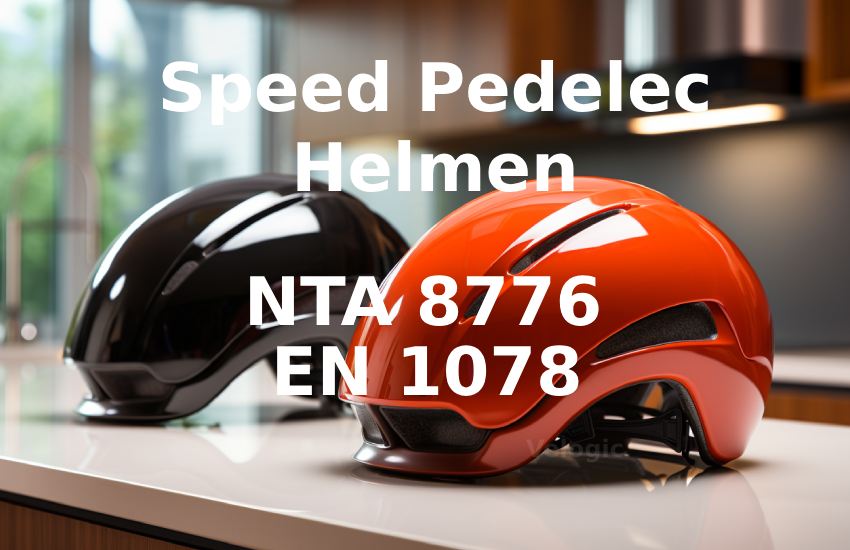
2. Materials and Construction of the Helmet
Most helmets use EPS (expanded polystyrene) foam known for its excellent shock-absorbing properties. This foam is effective in distributing the force of an impact over a larger area.
The outer shell, usually made of polycarbonate, provides additional protection and keeps the foam together in the event of an impact.
On the inside, foam is used, but often also a structure to protect the head from the sudden rotational force of an accident.
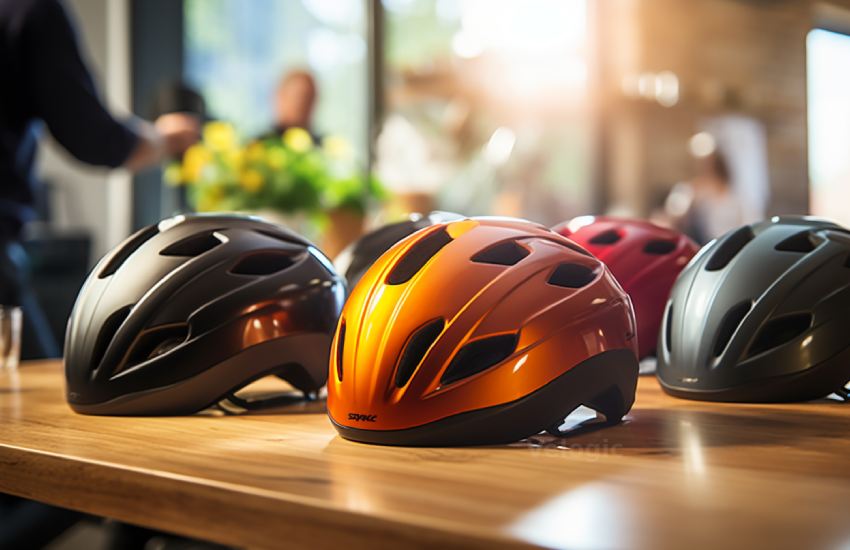
MIPS (Multi-directional Impact Protection System)
This is an additional layer of protection inside the helmet designed to reduce the rotational forces experienced during an angled impact.
MIPS allows the helmet to rotate slightly around the head, helping to reduce the amount of energy transferred to the brain.
WaveCel by Bontrager
Another innovative technology is WaveCel, a collapsible cellular structure used in helmets. It’s designed to be more effective in preventing concussions caused by certain bike accidents.
In addition to safety, helmet design is also crucial. Aerodynamic shapes, for example, can be beneficial for speed enthusiasts, while a broader coverage area provides more protection. Adjustable fit systems are also important for comfort and safety.
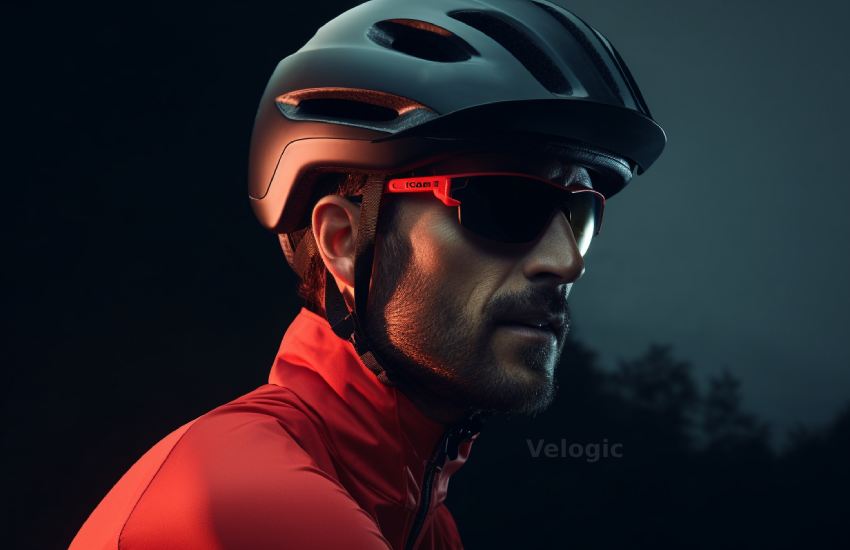
Choosing Safety over Budget
You can find helmets for around 70 euros with NTA 8776 certification, but there are also models priced around 400 euros.
What does a class 3 speed bike helmet actually cost? Let’s say a good class 3 speed bike helmet starts around 100 to 120 euros. For this price, you get good quality and safety. Strong materials but few extras.
Although helmets with technologies like MIPS or WaveCel are often more expensive, it’s an investment in extra safety. These helmets provide a higher level of protection.
Choosing a helmet with these advanced protection mechanisms means choosing safety over budget.
3. Fit and Comfort Determination
A helmet that doesn’t fit well provides insufficient protection. In a fall, a helmet that’s too loose can shift or even come off, while one that’s too tight is uncomfortable and can cause headaches.
Shape and Design of the Class 3 speed bike Helmet:
Helmets come in different shapes. Some are designed for rounder heads, while others are better suited to more oval-shaped heads. Improper helmet shape can lead to pressure points, causing discomfort while riding.
The internal structure of the helmet, such as the padding, should follow the contours of the head without being too tight. Padding that’s too thick can be uncomfortable, while padding that’s too thin provides insufficient protection.
Customized Class 3 speed bike Helmets for Women
You don’t necessarily need to buy a class 3 speed bike helmet specifically for women. Most designs are unisex, although there are brands that cater to this niche.
Women typically have slightly smaller heads than men. Therefore, women-specific helmets may be offered in smaller sizes and with a slightly different shape. Some women-specific helmets have adjustments or cutouts at the back of the helmet to accommodate wearing with a ponytail or braid.
Materials and Padding:
Look for helmets with soft, breathable padding. Materials like expanded polystyrene (EPS) combined with a soft fabric lining offer both comfort and shock absorption.
Padding that can be removed and washed contributes to hygiene and comfort, especially for daily use.
Adjustment Mechanisms:
Rear Dial Adjustment. Widely used and effective, this allows you to precisely adjust the helmet to fit snugly but comfortably. Each brand has its own design, but this is often not a problem. The only thing to watch out for is that the adjustment mechanism doesn’t cause discomfort once tightened.
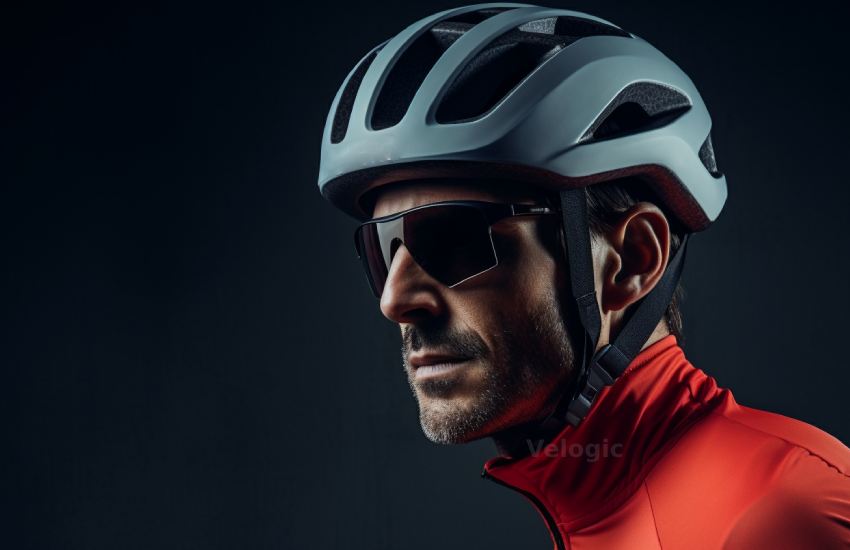
Adjustable Straps:
Straps around the chin and ears should be adjustable for a proper fit. The way this is done is also important. We prefer a magnetic closure because it’s easy to open and close. But you can also opt for a simpler but strong mechanism.
Internal Adjustment Systems:
Some helmets have a system inside that adjusts to the shape of the head. This can range from simple pads to advanced cradle systems.
Fit vs. Size:
Even if a helmet is adjustable, the basic measurement (head circumference) must be correct. An adjustable helmet in the wrong size will never fit optimally.
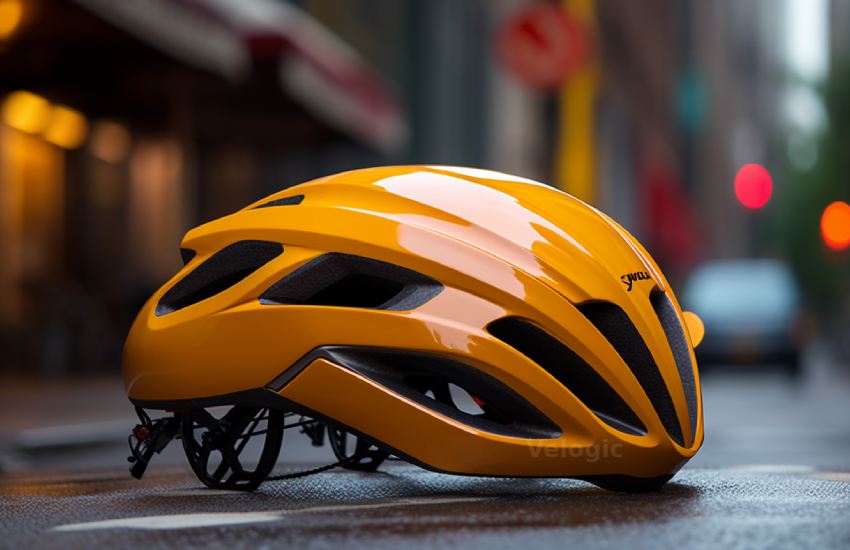
4. Adjustable Ventilation for Warm and Cold Days
There is no “one-size-fits-all” answer to the number of required ventilation openings. A larger number of smaller openings can be effective, as can a smaller number of larger openings. What matters is how they are positioned to create airflow.
Ventilation and Weather Conditions:
- More and larger ventilation openings are ideal for summer conditions, providing airflow and cooling.
- In cold conditions, too much ventilation can lead to heat loss. Some helmets have adjustable ventilation openings or interchangeable pads for insulation.
Wind Noise:
- A poorly designed ventilation system can cause wind noise at higher speeds. Helmets with aerodynamically tested designs can reduce this problem.
Internal air channels help direct airflow through the helmet, enhancing the cooling effect and removing heat and sweat. Helmets with well-designed internal channels offer better heat regulation.
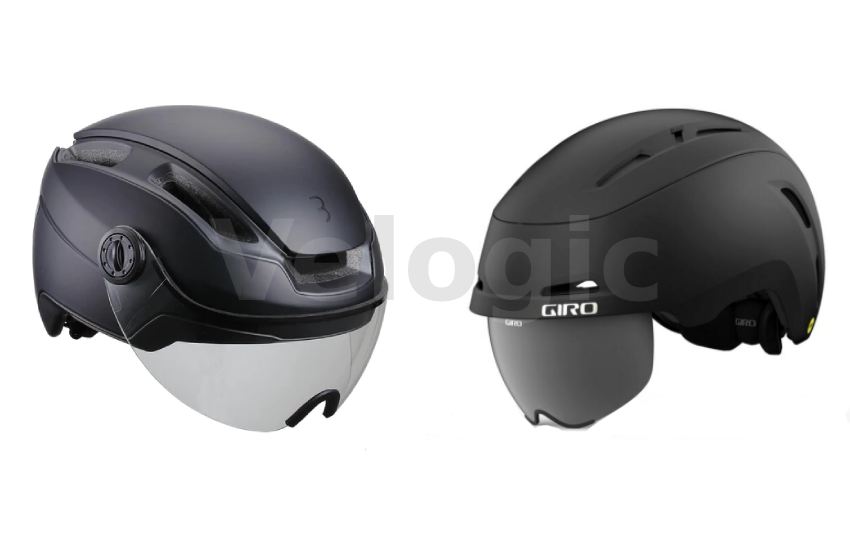
5. Visors for Class 3 speed bike Helmets
For us, it’s simple. Either choose a helmet with a visor or make sure to wear a good pair of cycling glasses. At this speed, you don’t want a bug flying into your eye.
If you’re planning to ride at 45 km/h, your eyes will start tearing up. At first, we didn’t think a visor or shield on the class 3 speed bike helmet was necessary, but after encountering three bugs, we won’t go without one.
Protection against sunlight is also essential. In Belgium, we don’t always think about sunglasses, but you really don’t want to limit your vision on the class 3 speed bike. By having a helmet with a built-in visor or shield, you’ll never forget this sun protection.
Right next to the road, there’s also a lot of flying debris, dust, and emissions. You might not notice it immediately, but your eyes will pick up a lot of dirt if they’re unprotected.
If you also ride in the rain because the class 3 speed bike is your primary mode of transportation, then you’ll want a visor to keep droplets out of your eyes. At 45 km/h, it can be quite painful.
In some cases, a visor can slightly limit the field of view and add extra weight. It’s important to choose a visor that provides clear visibility and can be easily raised or lowered.
Also, pay attention to the fit. You don’t want a visor that presses too much on your nose. After a few kilometers, this will feel uncomfortable and even painful.
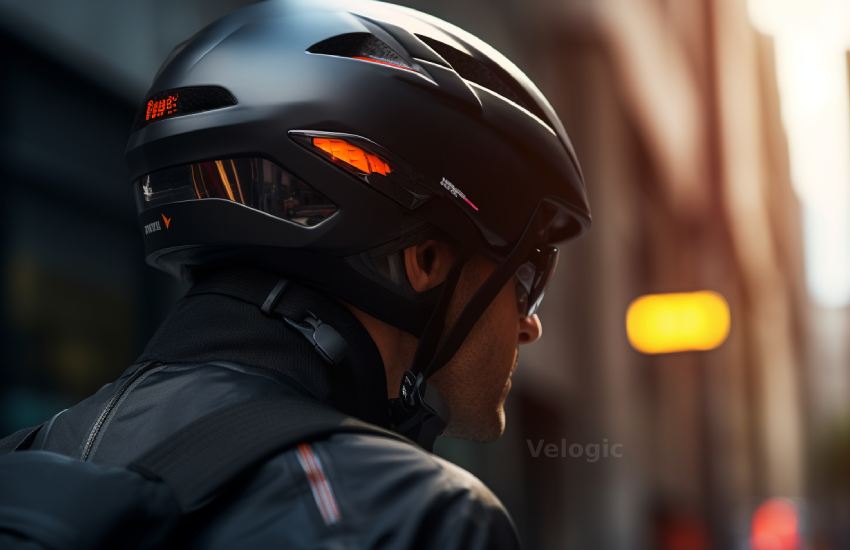
6. Integrated Lighting:
Most helmets with built-in lighting use LED lights due to their long lifespan, brightness, and low energy consumption. The lighting can range from subtle accent lighting to full rear lights and even headlights.
Integrated lighting enhances visibility in traffic, especially during twilight or at night. This is crucial for class 3 ebikes, which move faster and therefore need to be more noticeable to other road users.
Additional lighting may slightly increase the weight of the helmet and require charging or battery replacement. The brightness is sometimes less than that of separate bike lights, making them more of a supplementary safety measure.
So, ask yourself whether the lighting on the class 3 speed bike helmet is a gadget or genuine lighting. Also, consider the added weight. Comfort is important, and lighting can also be mounted on the class 3 speed bike itself.
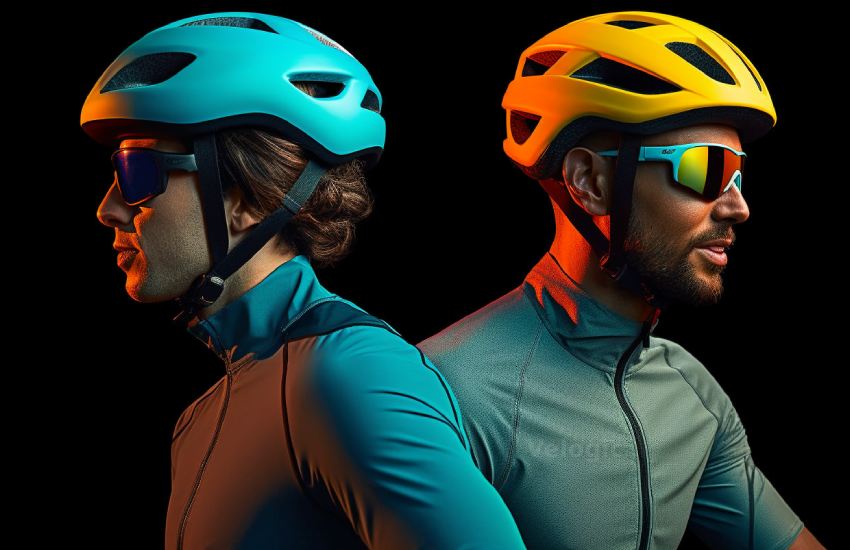
7. Fluorescent Colored Helmets with Reflectors
Brightly colored or neon designs on helmets enhance daytime visibility. They attract attention and can be recognized more quickly by motorists. This is especially important in urban areas where a cyclist can easily be overlooked amidst many visual stimuli.
Reflective materials on helmets increase visibility in low-light situations. Especially useful at dusk or in the early morning hours, but also in the dead of night.
Vehicles can perceive the cyclist more quickly and from a greater distance, especially when a car’s lights hit the reflective strips. However, they are less effective in daylight or situations without direct lighting.
While color choice is often a matter of personal preference, it plays an important role in safety. A compromise between style and safety is necessary.
Additional Measures for Visibility
- Fluorescent clothing and reflective vests offer a higher level of visibility than reflective elements on helmets. They are large and conspicuous, helping to increase awareness of the cyclist’s presence on the road.
- Bike lights (both front and rear lights) are crucial for visibility in the dark. Active lighting is often more effective than passive reflection.
- In addition to helmets, reflective bands for the arms and legs, or on the bike itself, can also increase visibility.
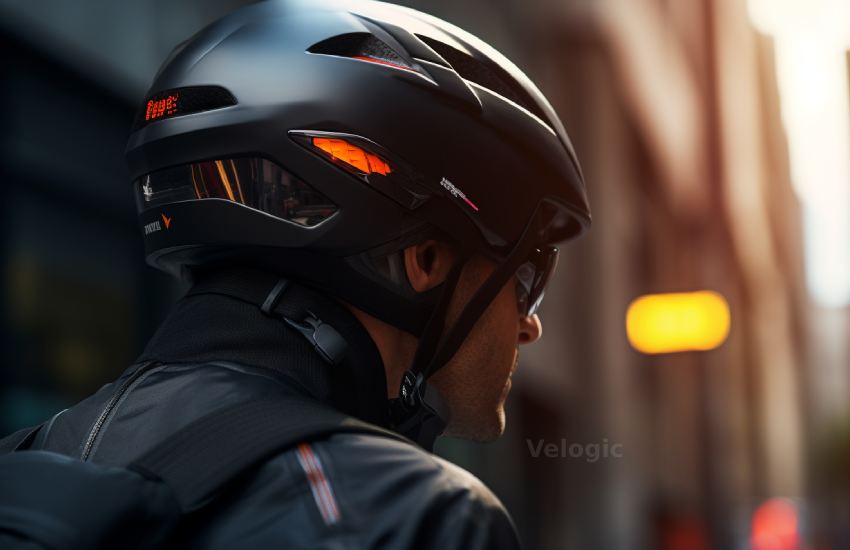
8. Connectivity: Helmet & Smartphone
Some helmets offer the ability to connect via Bluetooth to a smartphone. This allows the wearer to make hands-free calls, listen to music, or receive navigation instructions.
Connectivity adds a level of convenience, especially for those who want to use navigation or communication tools without stopping or handling their smartphone.
Listening to music or engaging in phone calls can distract attention from the road. It’s crucial to keep the volume low or leave one ear free to hear ambient sounds.
This feature is often found in higher price ranges. Whether it’s worth the extra cost depends on how often you’ll use the features and how important they are to your riding experience.

Which class 3 speed bike helmet to buy?
When considering these features, it is important to think about how they fit your specific needs and riding style. While some riders may benefit from advanced features such as integrated lighting or connectivity, others may prefer a simpler, lighter helmet without these extras.
The key is to find a balance between safety, comfort, functionality, and budget. Think about your safety. If you still have some doubts, calculate the price of your helmet per kilometer or per day:
- For example, if you buy a helmet for 250 euros (more expensive than average). You use it every day for 2 years, which is about 730 days. Each day you then spend about 30 cents to use your helmet.
- In Belgium, the fine for not wearing a helmet on the class 3 speed bike (for now) is only 58 euros. This will increase once more accidents occur.
If there is one tip to take from this extensive guide to comparing class 3 speed bike helmets, let it be this: YOUR SAFETY COMES BEFORE A FEW DOLLARS.
If you don’t want to compare yourself, you can continue searching in our extensive comparison of the best class 3 ebikes that we have tested.

